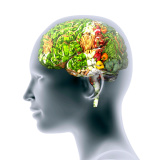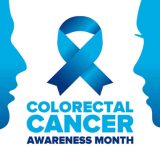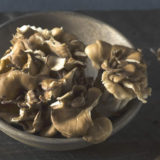Lately, health advocates have been raising concern about the hazards of eating too much salt. Even though salt is a valuable dietary mineral, it’s typically consumed in quantities much too large to be healthful. As such, understanding the hazards that excess salt consumption poses and incorporating salt restriction into daily practice are both crucial for optimal wellness and longevity.
About Salt
Salt, otherwise known as sodium chloride, is an abundant element that is an integral component of human nutrition. Some of the roles sodium plays in human physiology include:
- Sodium helps maintain the right balance of fluids in the body.
- Sodium is involved in the transmission of nerve impulses.
- Sodium is necessary for muscles to contract and relax.
- Sodium levels directly influence blood pressure.
As the functions above suggest, everyone needs some salt in his or her diet. However, not having enough is rarely a problem. According to a report from the U.S. Centers for Disease Control (CDC), the average American consumes about 3,300 milligrams of sodium per day – not including any salt added at the table. Dramatically below 3,300 milligrams, the U.S. Dietary Guidelines recommend limiting sodium intake to:
- less than 2,300 milligrams per day for 40 percent of Americans
- less than 1,500 milligrams per day for African Americans
- less than 1,500 milligrams per day for those who are over age 51
- less than 1,500 milligrams per day for those with health issues like high blood pressure, diabetes or chronic kidney disease
Just one teaspoon of table salt has 2,325 milligrams of sodium. Thus, the need to restrict salt intake is not just for health fanatics, but for anyone with a desire to live without high blood pressure, heart disease and kidney disease.
Salt Restriction
Eating less sodium is one of the most important lifestyle changes we can make to lower blood pressure, reduce the risk of heart disease, ease water retention and support kidney health. Likely due to society’s acknowledgement of its health hazards, the habit of adding salt to food at the table has diminished significantly over the past decade. However, avoiding the salt shaker isn’t enough to keep your sodium levels in check. The CDC estimates that:
- 65 percent of sodium comes from food sold in stores.
- 25 percent of sodium comes from meals in restaurants.
- About 90 percent of Americans eat more sodium than is recommended for a healthy diet.
- Reducing the sodium Americans eat by 1,200 mg per day on average could save up to $20 billion a year in medical costs.
Surprisingly, some of the highest sodium-content foods are not what our palette determines as salty. In fact, a new report from the CDC has revealed that bread is our biggest source of sodium. Although a single slice of bread may not appear to have a lot of salt, many Americans eat bread several times a day – which can add up to a lot of sodium.
Experts suggest the following five tips for reducing salt intake:
- Eat fresh (not processed food) whenever possible – a diet rich in fresh or frozen fruits and vegetables without sauce is ideal.
- Read food labels in search of sodium content – different brands of the same food can have drastically different sodium levels.
- Minimize bread and roll intake – Many people consume this ‘staple’ several times a day – from toast at breakfast to sandwich bread to dinner rolls. Try to cut back to one serving of bread a day.
- Go easy on the cheese – Softer cheeses (like mozzarella and ricotta) tend to have lower sodium than harder cheeses (like cheddar, American or parmesan). Skipping a slice of cheese on a sandwich or burger can save you about 230 extra milligrams of sodium.
- Inquire about sodium content when eating out – Many restaurants add a lot of salt to their food; however, most chefs will omit salt when a low-sodium request is made.
The good news is that our taste for salt is acquired – so it is possible to enjoy eating less. Experts suggest a gradual decrease in salt consumption in order for the taste buds to adjust. After several weeks of decreasing salt intake, most people notice that foods they used to eat taste too salty. As less sodium is used, our preference for it diminishes. Besides all of the associated health benefits, a decreased reliance on salt allows for a richer appreciation of how food actually tastes.
Our bodies need salt to function – but most of us eat far too much of it. To reduce the potentially serious health effects of high blood pressure, heart disease and kidney disease, lowering sodium intake is essential. To stay within 1,500 or 2,300 milligrams of sodium per day, be aware of how much salt you consume, how it impacts your health and take the steps necessary to reduce your sodium intake.
References:




